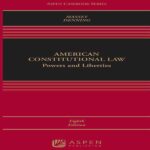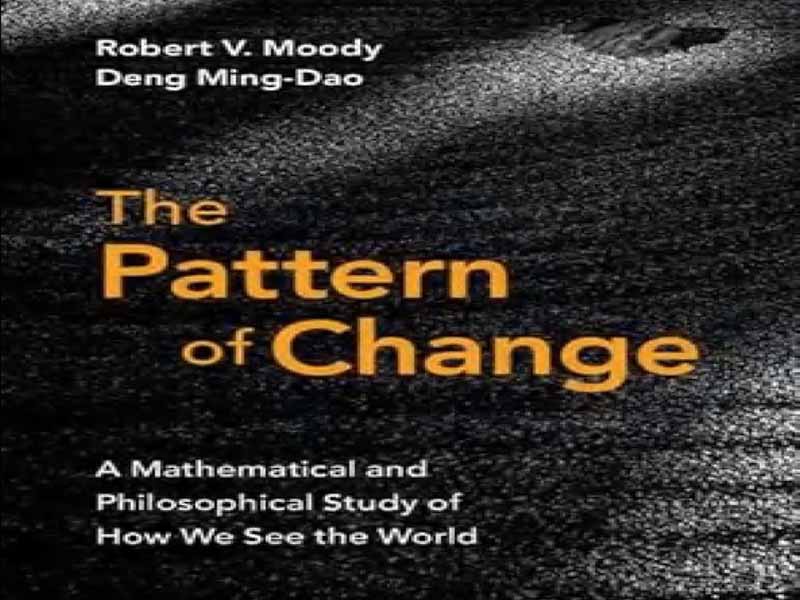- عنوان: The Pattern of Change -A Mathematical and Philosophical Study of How We See the World
- نویسنده: Robert V. Moody, Ming-Dao Deng
- حوزه: فلسفه جهان
- سال انتشار: 2025
- تعداد صفحه: 601
- زبان اصلی: انگلیسی
- نوع فایل: pdf
- حجم فایل: 7.88 مگابایت
تنها چیز ثابت در این دنیای تغییر، خودِ تغییر است. اغلب اینطور گفته میشود. هراکلیتوس که در قرن پنجم پیش از میلاد زندگی میکرد، به طرز مشهوری بر جریانی که زیربنای همه چیز است تأکید داشت و تغییر، ویژگی اصلی کتاب معروف ییچینگ (ای چینگ، کتاب تغییرات) است که قدمت آن به حدود پنج قرن قبل برمیگردد. زندگی هیچ شکی در مورد واقعیت تغییر برای ما باقی نمیگذارد. اما آیا واقعاً درست است که هیچ چیز ثابت دیگری جز خود تغییر وجود ندارد؟ تغییر کاملاً تصادفی نیست – بدون اثرات قابل پیشبینی نیست. در درون تغییر، اشکال و الگوهایی پدید میآیند و اگر اینها نبودند، که ما مشاهده میکنیم، پیشبینی میکنیم و به آنها وابستهایم، هیچ جهانی پر از زندگی با اشکال شگفتانگیزش که در چرخههای بزرگ چیزها پدید میآیند، رشد میکنند و بازسازی میشوند، وجود نمیداشت. گفتن اینکه تنها چیز ثابت خودِ تغییر است، خیلی رک و بیپرده است. آنچه از تغییر پدیدار میشود، الگو است و این الگو چیزی است که میتوانیم آن را تشخیص دهیم و به آن وابسته باشیم. آیا اینطور نیست که رودخانهها رودخانه هستند زیرا چیزی در مورد آنها تغییر نمیکند، چیزی که هم از ماهیها و هم از ماهیگیران پشتیبانی میکند؟ نگاهی دقیقتر به گفتههای هراکلیتوس نشان میدهد که او بیش از آنچه ما نمیتوانیم دو بار وارد یک رودخانه شویم، درک کرده است: همانطور که آنها وارد یک رودخانه میشوند، آبهای دیگر و همچنان دیگر بر روی آنها جاری میشوند. [94، قطعه L] این نشان میدهد که اگرچه ما نمیتوانیم دو بار وارد یک رودخانه شویم، آنچه رودخانه را به یک رودخانه تبدیل میکند، آب جاری آن است: نه جریانی، نه رودخانهای. رودخانه به عنوان یک الگو از طریق جریانش تعریف میشود. در اینجا ما درک عمیقتری از چگونگی تبدیل شدن یکسانی/تفاوت به روشی مهم برای تغییر مداوم موقعیت خود احساس میکنیم. رودخانه با تشکیل همیشگی آب (دیگر) جدید، یکسان میماند. این همان رودخانه است زیرا در نحوه تغییر آن است که به خودش تبدیل میشود. بنابراین یکسانی و تفاوت با هم چیزی هستند که یک رودخانه را به یک رودخانه تبدیل میکنند. این موضوع اساسی این کتاب است: جهان، جهانی از تغییر است، اما تغییر خود را به شکل الگو نشان میدهد. از طریق این الگوهای تغییر، که ما آنها را تشخیص میدهیم و بر اساس آنها عمل میکنیم، میتوانیم در این جهان زندگی کنیم. حتی میتوانیم بگوییم که آنها چگونگی “ساختن” جهان ما هستند. و برای همه اشکال حیات نیز همینطور است. با این حال، به عنوان یک کلمه در زبان انگلیسی، خود الگو (pattern) یک موجودیت مبهم است. الگوهای آب و هوایی، الگوهای لباس، الگوهای نگهدارنده برای هواپیماها، الگوهای رفتاری، الگوهای اعداد، الگوهای دستهای و غیره و غیره تا بینهایت وجود دارند. ما شنیدهایم که الگو به عنوان اطلاعات، حافظه، تکرار توصیف میشود که همه آنها عناصری از حقیقت دارند و ریاضیات علم الگوها نامیده شده است. با این حال، از میان همه این ایدههای متنوع، یک ایده وجود دارد که به نظر ما اساسی و حتی جهانی میآید – ایدهای که قبلاً به آن اشاره کردیم: منشأ الگو پویا است، الگو دال و شناسه تغییر است.
The only constant in this world of change is change itself. So it is often said. Already Heraclitus living in the fifth century BCE famously emphasized the flux that underlies all things, and change is the central feature of the famous Yijing (I Ching, The Book of Changes) that dates back some five centuries earlier. Life leaves us with no doubt about the reality of change. But is it really true that there are no other constants than change itself? Change is not entirely random—it is not without predictable effects. Within change there arise forms and patterns, and were it not for these, which we observe, predict, and depend on, there would be no world full of life with its amazing forms that arise, thrive, and regenerate in the great cycles of things. To say that the only constant is change itself is too blunt. What emerges from change is pattern, and it is pattern that we can recognize and depend on. Is it not the case that rivers are rivers because something about them does not change, something that supports both fish and fishermen? A closer look at what Heraclitus said reveals that he understood more than we cannot step into the same river twice: As they step into the same rivers, other and still other waters flow upon them. [94, fragment L] This suggests that although we cannot step into the same river water twice, what makes the river a river is its flowing water: no flow, no river. The river is defined as a pattern through its flow. Here we sense a deeper understanding of how sameness/difference turns out to be an important way in which we continuously reposition ourselves. The river stays the same by always consisting of new (other) water. It is the same river because it is in how it changes that it becomes itself. Thus sameness and difference are together what makes a river a river. This is the underlying theme of this book: the world is a world of change, but change manifests itself in the form of pattern. It is through these patterns of change, which we recognize and act upon, that we are able to live in this world. We might even say that they are how we come to “make” our world; and so it is for all forms of life. Still, as a word in English, pattern itself is a nebulous entity. There are weather patterns, dress patterns, holding patterns for planes, patterns of behavior, patterns of numbers, flocking patterns, and on and on ad infinitum. We have heard pattern described as being as information, as memory, as repetition, all of which have elements of truth, and mathematics has been called the science of patterns. Yet out of all this variety of ideas there is one that strikes us as fundamental, even universal—the one that we have already alluded to: the origin of pattern is dynamic, pattern is the signifier and identifier of change.
این کتاب را میتوانید از لینک زیر بصورت رایگان دانلود کنید:
Download: The Pattern of Change -A Mathematical and Philosophical Study of How We See the World



































نظرات کاربران